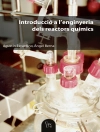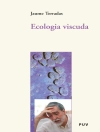An essential guide to using Maxima, a popular open source symbolic mathematics engine to solve problems, build models, analyze data and explore fundamental concepts
Symbolic Mathematics for Chemists offers students of chemistry a guide to Maxima, a popular open source symbolic mathematics engine that can be used to solve problems, build models, analyze data, and explore fundamental chemistry concepts. The author — a noted expert in the field — focuses on the analysis of experimental data obtained in a laboratory setting and the fitting of data and modeling experiments. The text contains a wide variety of illustrative examples and applications in physical chemistry, quantitative analysis and instrumental techniques.
Designed as a practical resource, the book is organized around a series of worksheets that are provided in a companion website. Each worksheet has clearly defined goals and learning objectives and a detailed abstract that provides motivation and context for the material. This important resource:
* Offers an text that shows how to use popular symbolic mathematics engines to solve problems
* Includes a series of worksheet that are prepared in Maxima
* Contains step-by-step instructions written in clear terms and includes illustrative examples to enhance critical thinking, creative problem solving and the ability to connect concepts in chemistry
* Offers hints and case studies that help to master the basics while proficient users are offered more advanced avenues for exploration
Written for advanced undergraduate and graduate students in chemistry and instructors looking to enhance their lecture or lab course with symbolic mathematics materials, Symbolic Mathematics for Chemists: A Guide for Maxima Users is an essential resource for solving and exploring quantitative problems in chemistry.
Yazar hakkında
Professor Fred Senese is a computational chemist at Frostburg State University with a particular focus on chemical education. His research interests include applications of artificial intelligence in chemical education, development of web-based narratives and construction kits for chemical education, remote control and access of instrumentation, and environmental chemical analysis applied to problems in ethnobotany.












